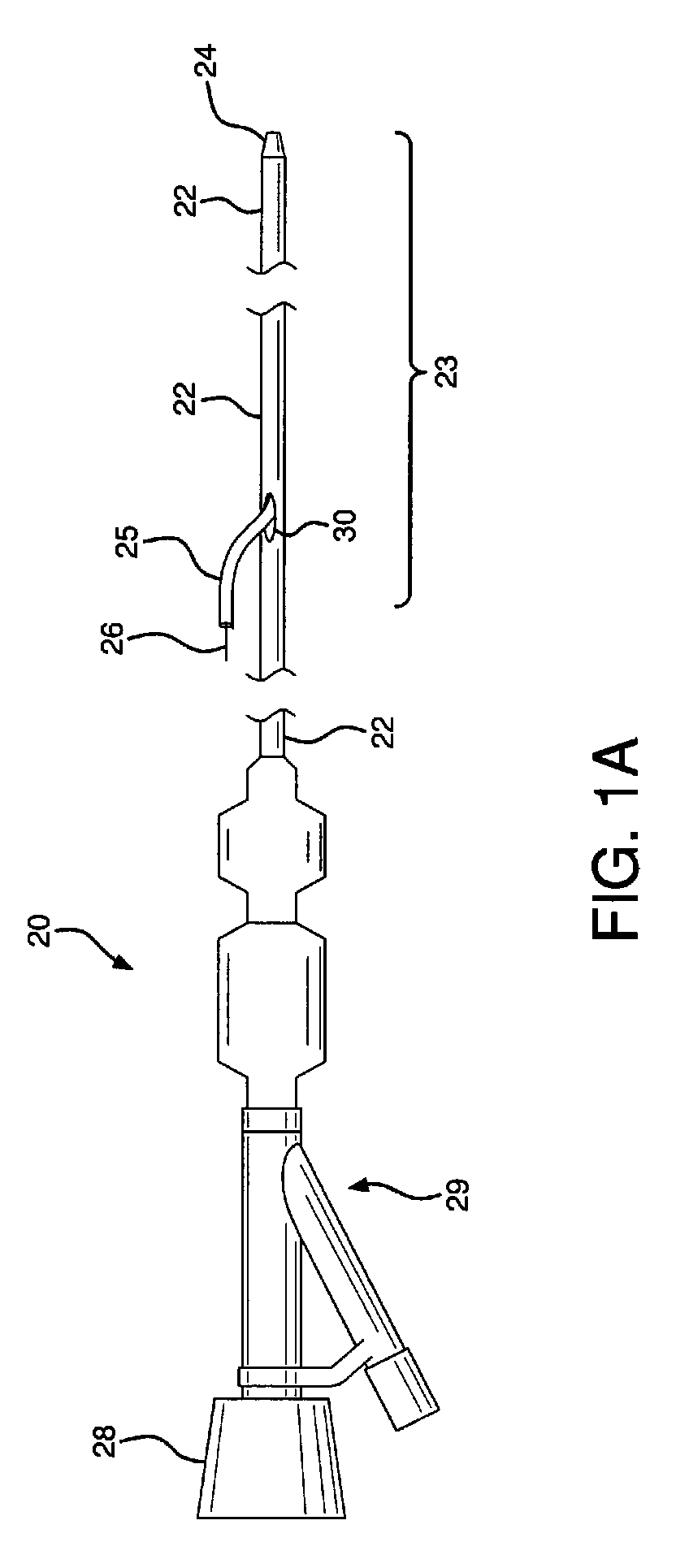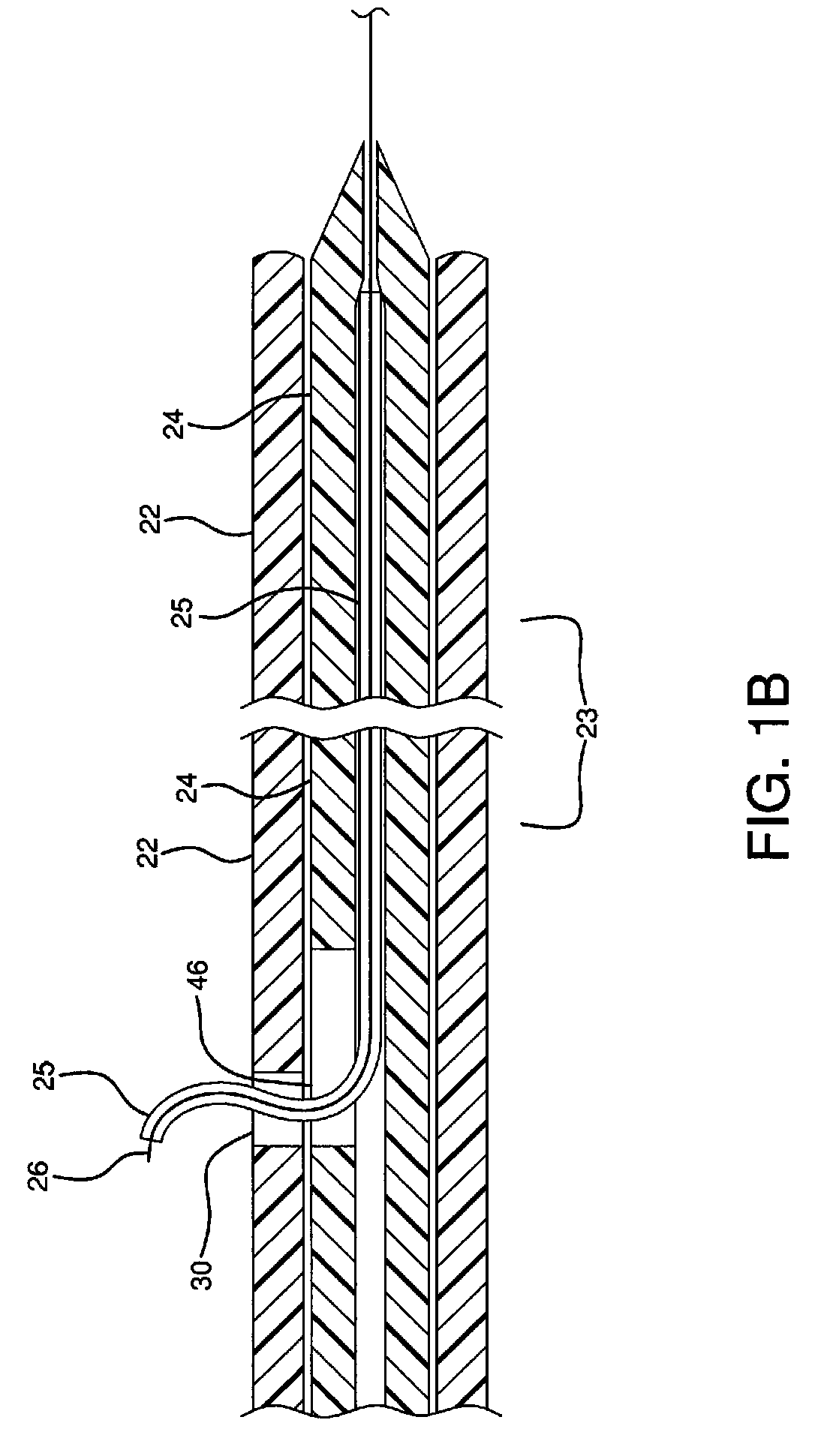Retrieval catheter
a catheter and catheter technology, applied in the field of catheters, can solve the problems of high risk of endovascular surgery, wire tip being diverted and/or ensnared by the stent, and clinicians being required to perform higher risk procedures to retriev
- Summary
- Abstract
- Description
- Claims
- Application Information
AI Technical Summary
Benefits of technology
Problems solved by technology
Method used
Image
Examples
examples
[0046]To construct a sheath, a 1.24 mm PTFE coated mandrel was loaded with a 1.29 mm inner diameter etched PTFE liner (1.29 mm inner diameter.×0.02 mm thick wall) and secured. A braided sleeving (0.25 mm×0.76 mm stainless steel flat wire, 2 over 2 under, 50 ppi) was loaded and secured at the proximal end of mandrel. The braid was stretched to the distal end of the mandrel and carefully trimmed to length with scissors so that the ends of the wires were uniform. Trimming of the braid length may be achieved with any suitable cutting or trimming tool. A marker band (platinum / iridium, 1 mm width minimum, inner diameter 14.7 mm, 0.25 mm minimum thickness) was slid onto the assembly from the proximal end of the loaded mandrel to the distal end. The marker band was carefully brought up to the end of the braid so that the marker band covered the end of the braid and so that no ends of wires were showing at the marker band. The location of the marker band should be from about 5.08 cm to 6.35 ...
PUM
 Login to View More
Login to View More Abstract
Description
Claims
Application Information
 Login to View More
Login to View More - R&D
- Intellectual Property
- Life Sciences
- Materials
- Tech Scout
- Unparalleled Data Quality
- Higher Quality Content
- 60% Fewer Hallucinations
Browse by: Latest US Patents, China's latest patents, Technical Efficacy Thesaurus, Application Domain, Technology Topic, Popular Technical Reports.
© 2025 PatSnap. All rights reserved.Legal|Privacy policy|Modern Slavery Act Transparency Statement|Sitemap|About US| Contact US: help@patsnap.com



